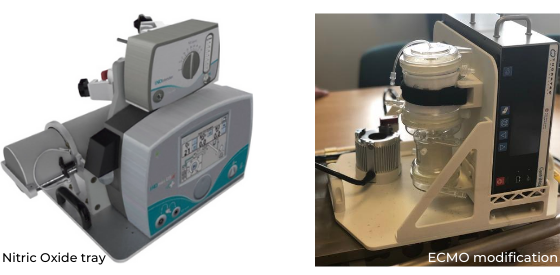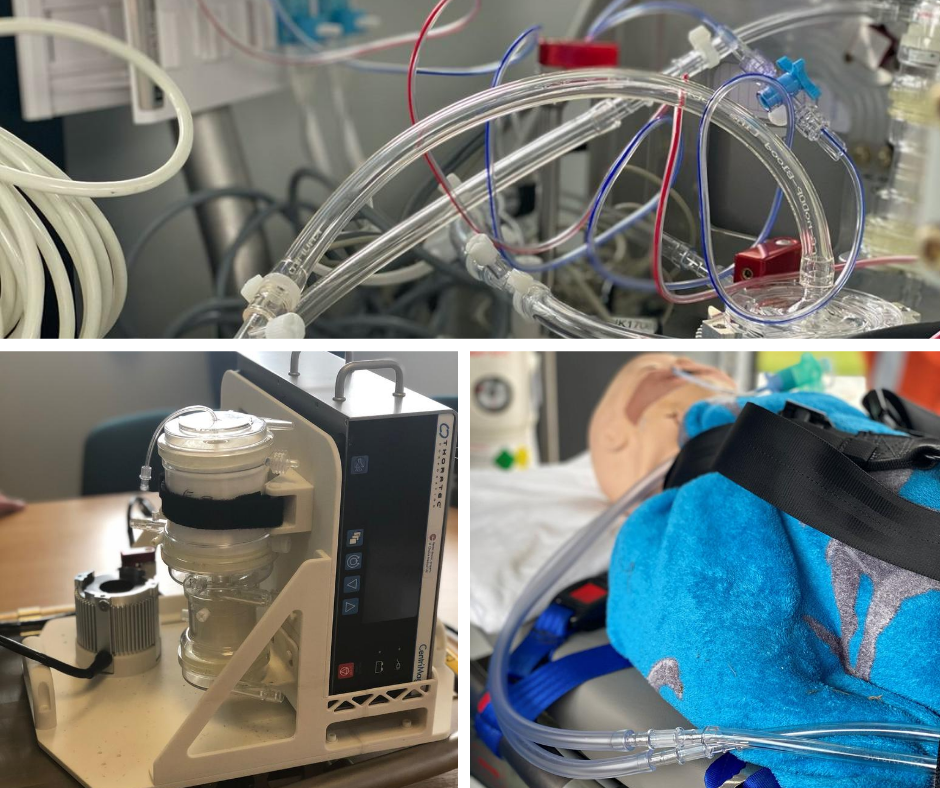News Hub
Children’s Air Ambulance offers pioneering medical treatment

The pioneering Children’s Air Ambulance (TCAA) has achieved another first in the UK by further improving specialist, lifesaving equipment on-board their aircraft to assist NHS specialist transport teams during flights.
The national transfer service provides the only intensive care aircraft in the country dedicated to transferring critically ill babies and children, at high-speed, from local hospitals to specialist paediatric and neonatal treatment centres.
The charity, aircraft provider Specialist Aviation Services (SAS) and NHS Clinicians, collaborated on a bespoke design to offer ECMO (Extra Corporeal Membrane Oxygenation) and nitric oxide functionality on-board the AgustaWestland 169 aircraft.
ECMO, a system similar to a heart and lung bypass machine, is a temporary means of providing oxygen to the body when a child’s heart and/or lungs are not working properly and normal methods of intensive care are failing, and nitric oxide is an inhaled gas, used together with a ventilator, to treat respiratory failure in premature babies and infants.
These new state of the art modifications, which integrate seamlessly with its newly-designed stretcher system, make the aircraft second to none in the provision of paediatric and neonatal transfers.

The charity, which covers the entire UK, works closely with 10 NHS Clinical Partner Teams across the country such as Evelina London, the Heart Link ECMO Centre in Leicester and Embrace Yorkshire & Humber Infant & Children’s Transport Service (Embrace).
Dr Claire Westrope, Consultant PICU and ECMO Intensivist and Lead Consultant, at Leicester Children’s Hospital said, “We are extremely excited to receive the ECMO modification for the Children’s Air Ambulance stretcher, which we have helped develop with SAS and TCAA.
“This system will allow us to transport critically ill babies and children cannulated for ECMO in their referring centre, using a bespoke system designed specifically for use with the TCAA, back to a definite ECMO centre for ongoing specialist care. Until now this could only be done by road.
“This will minimise transport times for the team and patients, enabling us to move patients quickly and safely over long distances and increases access to ECMO for those patients who are geographically distant from specialist Paediatric ECMO centres.”
Stephen Hancock, Lead Consultant (Paediatrics) at Embrace added: “Patients requiring nitric oxide therapy are amongst the sickest that we care for. They sometimes have to be transferred long distances for specialist treatment, which presents real challenges in a road ambulance.
“Having the capability to provide nitric oxide therapy to patients in the Children’s Air Ambulance is a welcome development which will make a real difference to these critically ill babies and children.”
The Children’s Air Ambulance charity is continually looking at ways in which they can increase support to the NHS and the clinical teams, and by enabling the functionality of ECMO and nitric oxide, they are already leading the way in paediatric and neonatal transfer aviation.
Richard Clayton, Director of Operations for the Children’s Air Ambulance said; “I am delighted to now be able to offer these lifesaving equipment developments on-board our helicopters to further support our hardworking NHS specialist transport teams in their lifesaving work. These have been complex projects to bring to fruition, and I am grateful to Specialist Aviation Services expertise in making this happen.”
Director of Completions at SAS, Jan-Marc van Dam added: “Specialist Aviation Services are confronted daily with the realities of the air ambulance environment: medical technology advances, operating methods evolve and regulations change.
“Due to our close working relationship with the Children’s Air Ambulance we keep at the forefront of medical technology; from developing an advanced paediatric intensive care interior through our innovative ECMO and nitric oxide solution to complying with strictest oxygen safety regulations, we worked closely with the NHS clinical teams to ensure the equipment mounting was tailored to their operating procedures; together we are committed to helping the Children’s Air Ambulance achieve their missions safely, efficiently and most importantly, save lives.”

